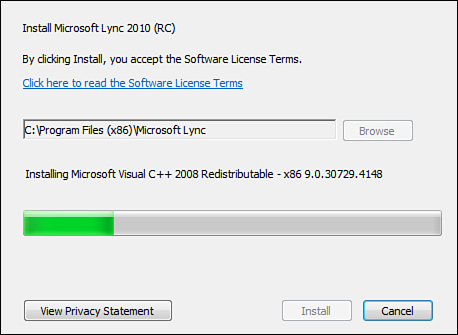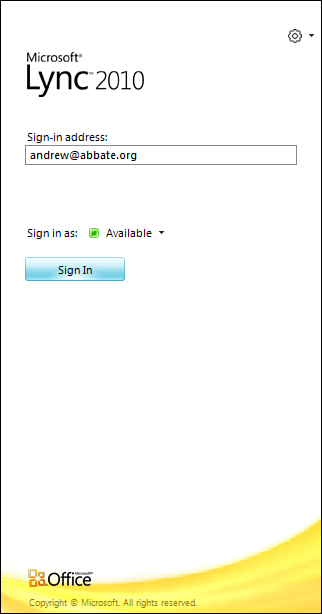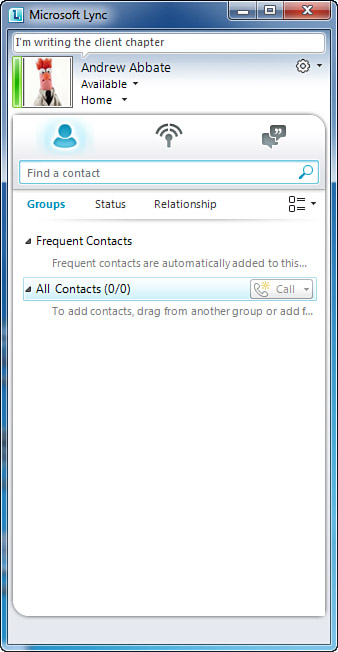The Lync 2010 client for Windows comes in two installer flavors:
32-bit and 64-bit. The functionality is identical, so simply choose the
version that matches the operating system you are running. To install
the client, follow these steps:
1. Double-click LyncSetup.exe.
2. When prompted by User Account Control, click Yes.
3. Browse to the location where you want to install the Lync client and choose whether to share information with Microsoft. Click Install, which will launch the installer as shown in Figure 1.
Figure 1 Installing the Lync 2010 Client

At this step, you might notice two items
that seem slightly odd. First, the default installation path for the
64-bit installer is c:\Program Files (x86). Second, if the 32-bit
version of Visual C++ redistributable isn’t already installed, it is
installed as part of the Lync client installation. Although the
installer is 64-bit, the client is actually 32-bit. Attempting to
install through the 32-bit installer on a 64-bit operating system
generates an error telling you it is the incorrect version.
4. When the installation is finished, click Close. If the box is checked, Lync begins.
When the Lync 2010 client launches, it will be at the sign-in
prompt. Enter the SIP address of the user you want to log on as and
click Sign In, as shown in Figure 2.
Figure 2 Signing in with Lync 2010 Client

If the DNS records are configured correctly to support Lync Server
2010, you are prompted for Active Director credentials. If the
necessary SVR records are not present, manually override the logon
setting with these steps:
1. Click the downward-pointing arrow located to the right of the gear icon in the upper right of the client.
2. Choose Tools and then choose Options.
3. Next to the Sign-in address, click Advanced.
4. Choose Manual configuration and enter the name of the Lync 2010 Server.
5. Click OK, and then click OK again.
6. Click Sign In.
At this point, you should see the Lync client logged in successfully, as shown in Figure 3.
Figure 3 The Lync 2010 Client
